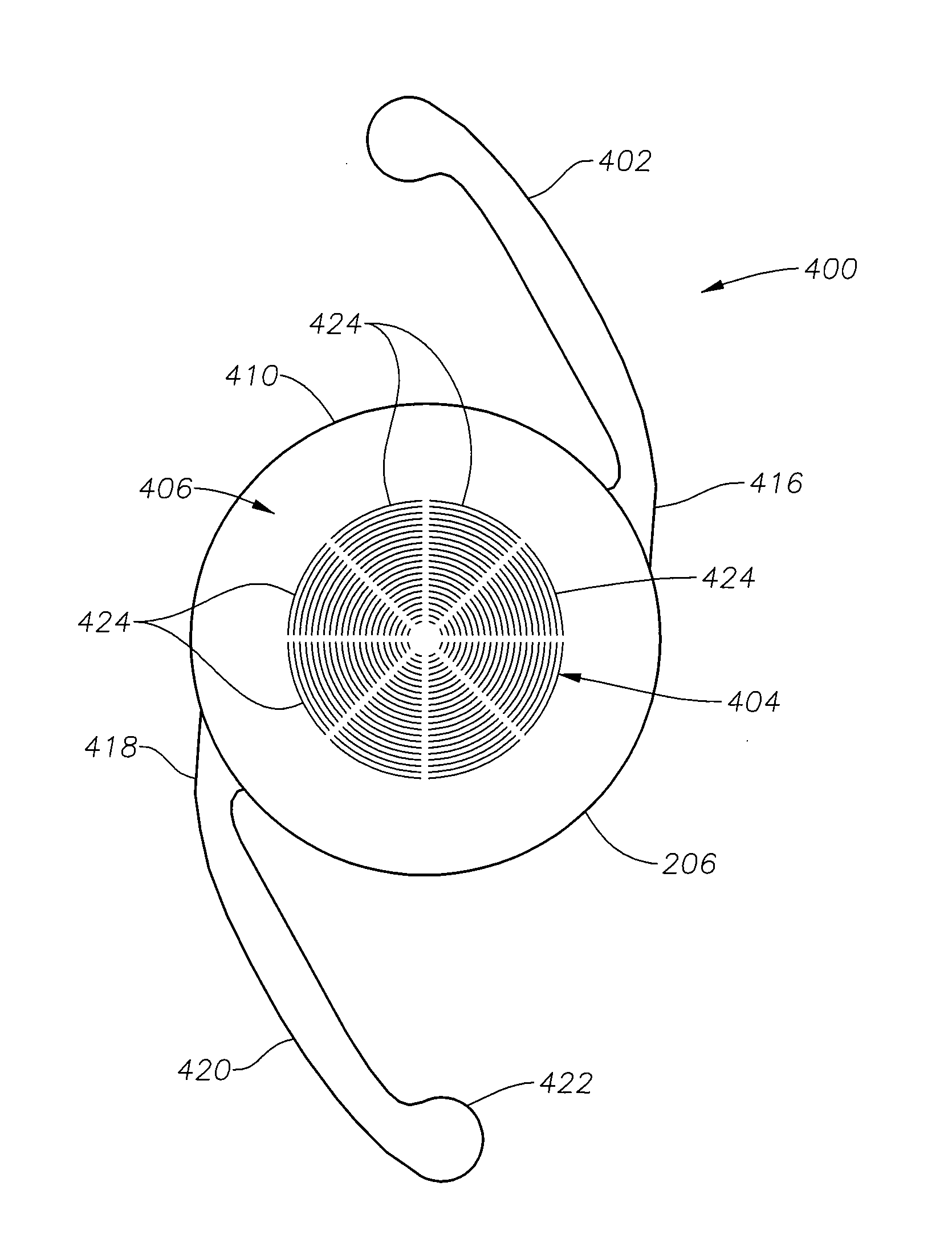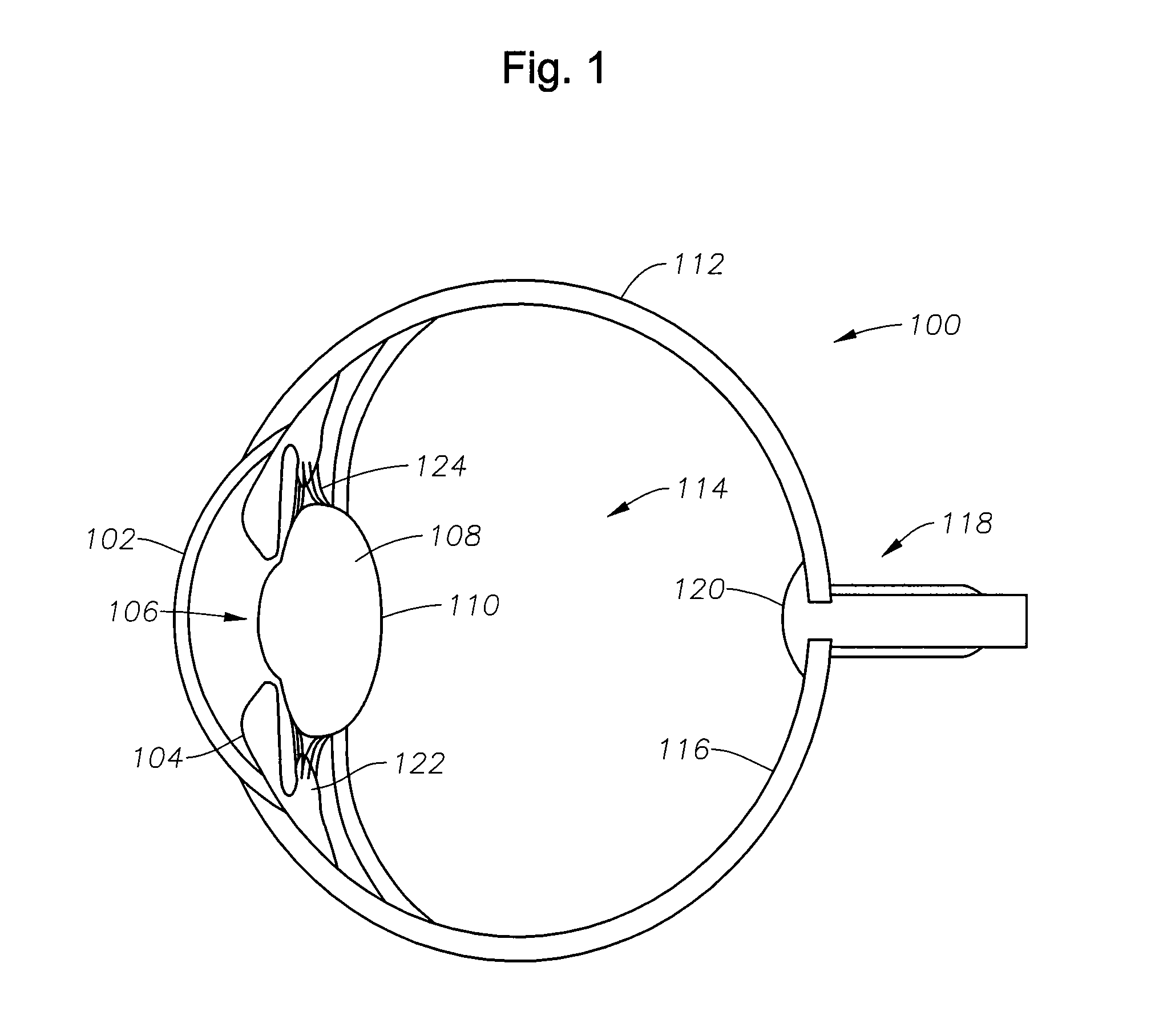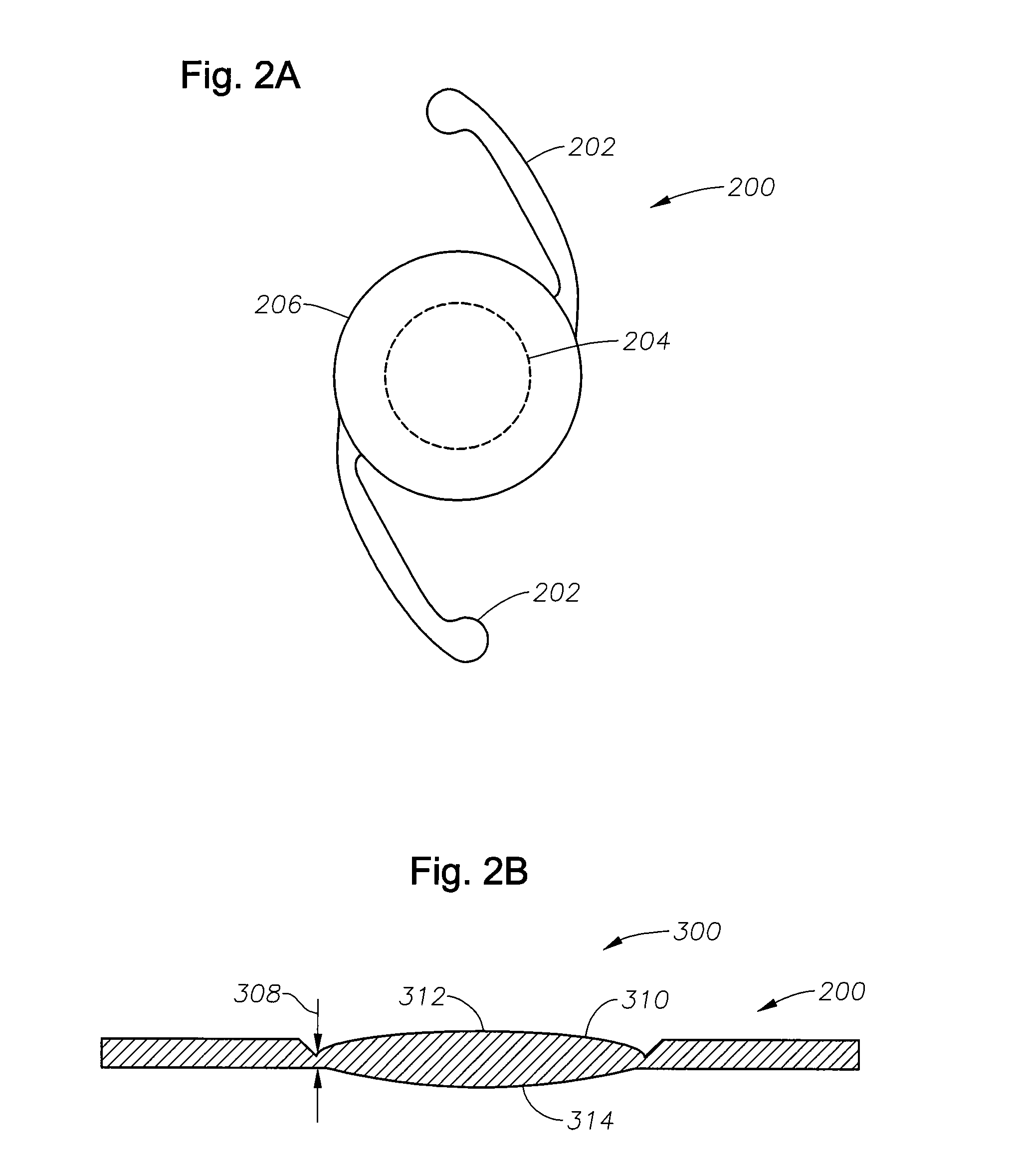Radially segmented apodized diffractive multifocal design for ocular implant
a diffractive multifocal and ocular implant technology, applied in the field of ocular implants, can solve the problems of less transparent lenses and vision deterioration, and achieve the effects of reducing glare, prolonging depth of focus, and reducing step height smoothly
- Summary
- Abstract
- Description
- Claims
- Application Information
AI Technical Summary
Benefits of technology
Problems solved by technology
Method used
Image
Examples
Embodiment Construction
[0018]Preferred embodiments of the present invention are illustrated in the FIGs., like numerals being used to refer to like and corresponding parts of the various drawings.
[0019]A radially segmented apodized diffractive multifocal design for ocular implant is provided by embodiments of the present invention. Embodiments of the ocular implant can comprise a radially segmented apodized diffractive multifocal intraocular lens (IOL) optic and a number of haptics. The radially segmented apodized diffractive multifocal IOL optic may pass optical energy in both photopic and mesopic conditions. The radially segmented apodized diffractive multifocal IOL can comprise a number of radially segmented apodization zones, each radially segmented apodization zone having a unique focal length. The haptics mechanically couple to the apodized diffractive multifocal IOL optic in order to position and secure the apodized diffractive multifocal IOL within the eye. The radially segmented apodized diffract...
PUM
 Login to View More
Login to View More Abstract
Description
Claims
Application Information
 Login to View More
Login to View More - R&D
- Intellectual Property
- Life Sciences
- Materials
- Tech Scout
- Unparalleled Data Quality
- Higher Quality Content
- 60% Fewer Hallucinations
Browse by: Latest US Patents, China's latest patents, Technical Efficacy Thesaurus, Application Domain, Technology Topic, Popular Technical Reports.
© 2025 PatSnap. All rights reserved.Legal|Privacy policy|Modern Slavery Act Transparency Statement|Sitemap|About US| Contact US: help@patsnap.com



